(5724 products available)














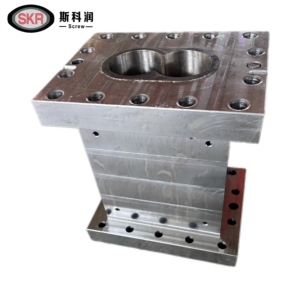






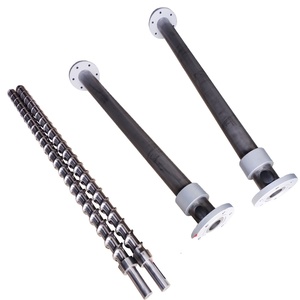





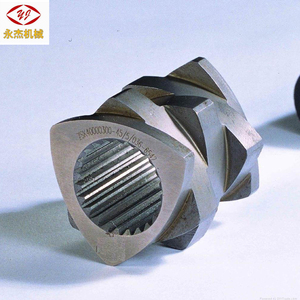





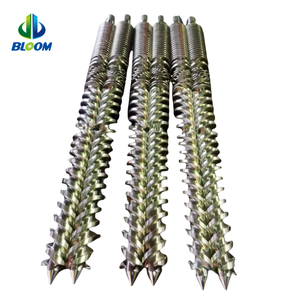








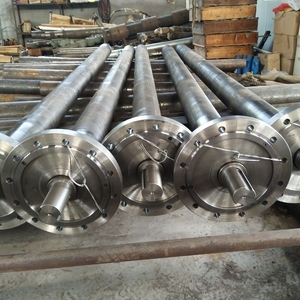









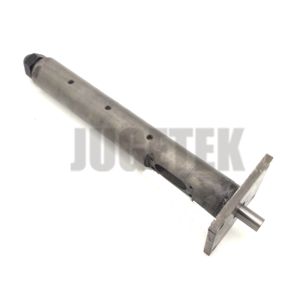
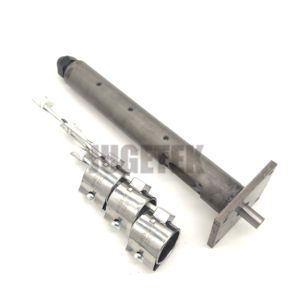


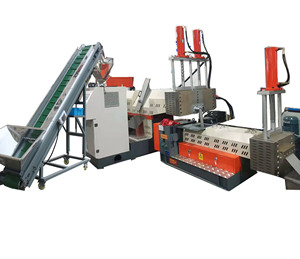
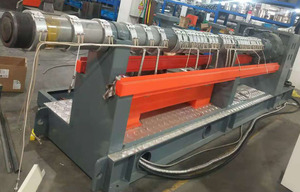
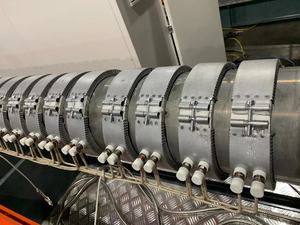



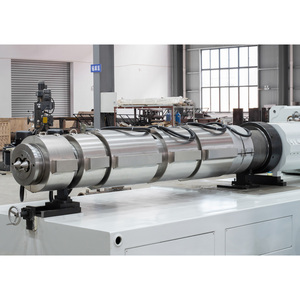
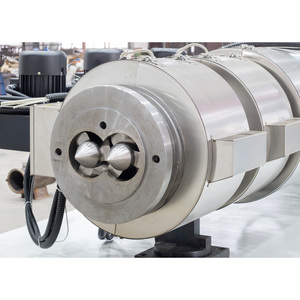




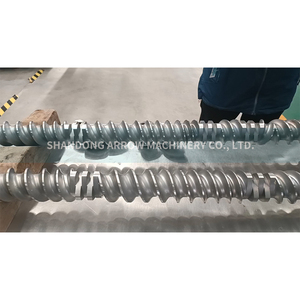

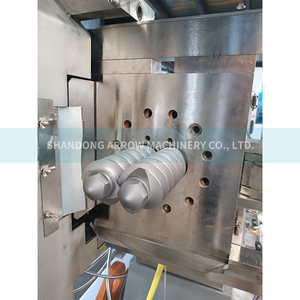













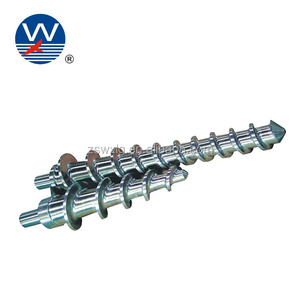



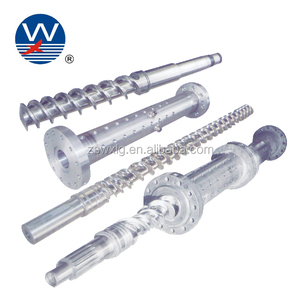

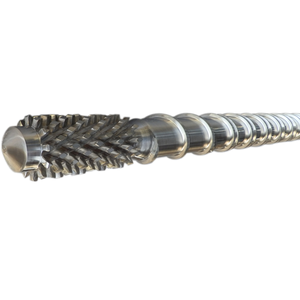

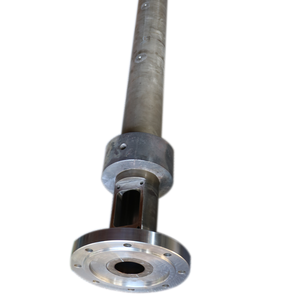
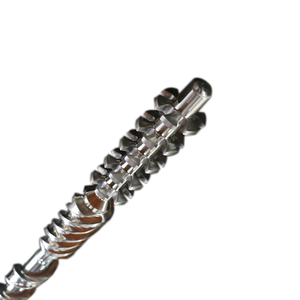
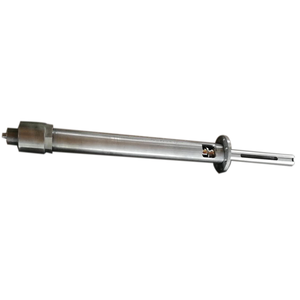




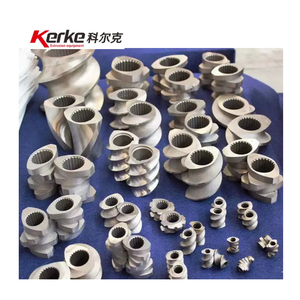


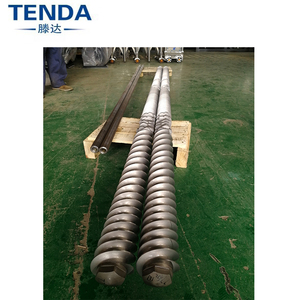





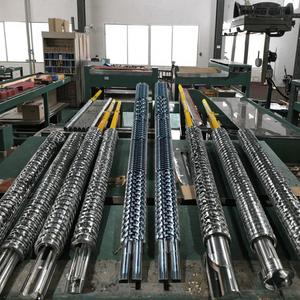



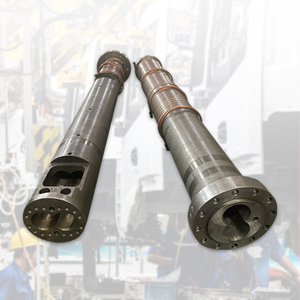









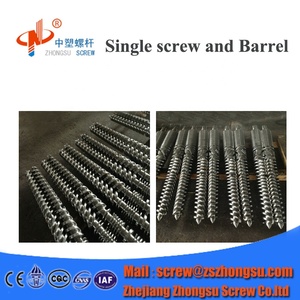








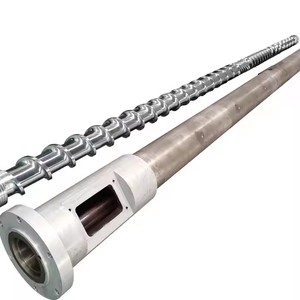














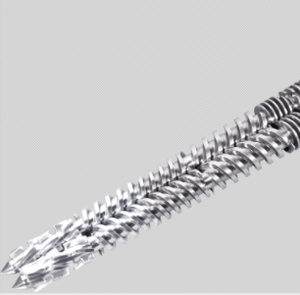



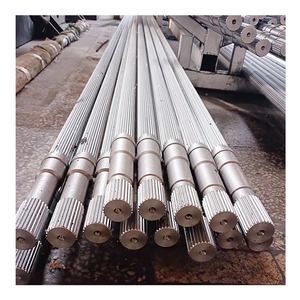


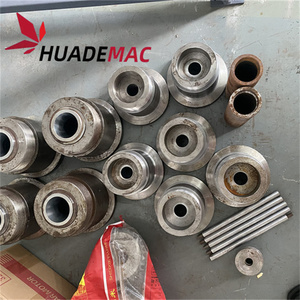




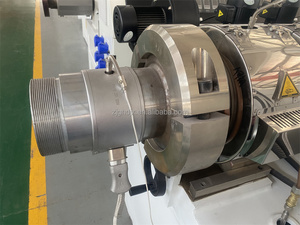
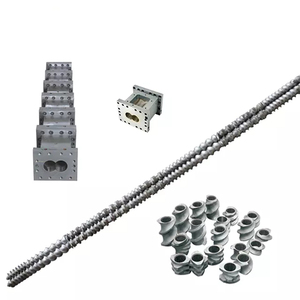
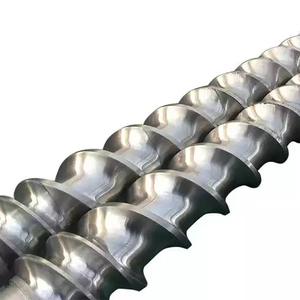




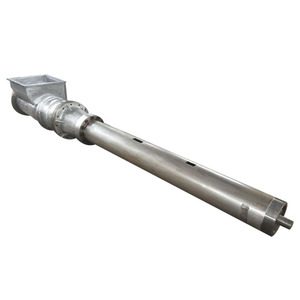




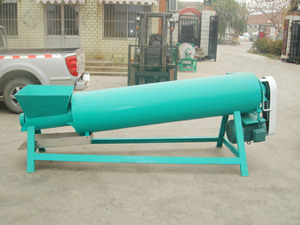



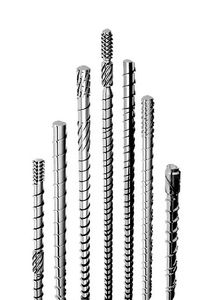
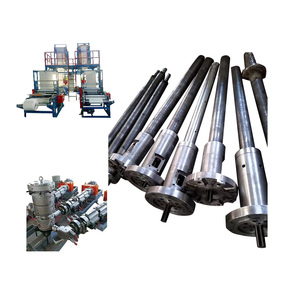


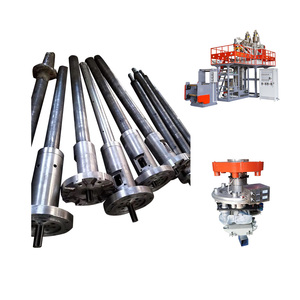



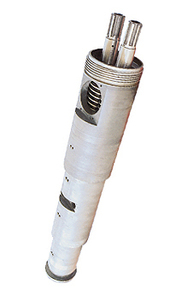





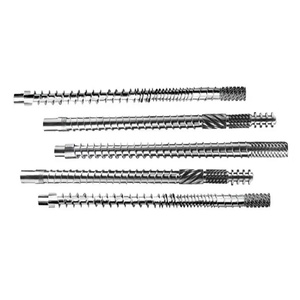


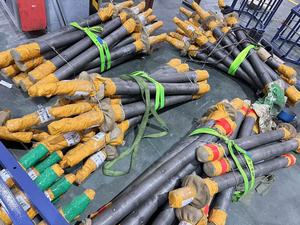


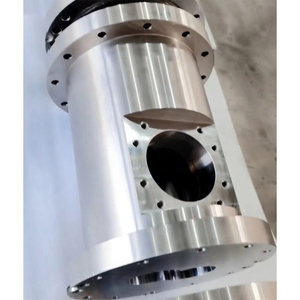



An extruder screw barrel is a critical component in the plastic extruder machine. There are different types of extruder screw barrels, each designed for specific applications and materials. Here are a few:
It is the most common extruder type used in the plastic industry. It consists of a single rotating screw in a cylindrical barrel. The screw is responsible for melting, pressurizing, and propelling the plastic material through the extruder. Single-screw extruders are used for a wide range of applications, including compounding, sheet extrusion, film extrusion, and pelletizing.
The twin-screw extruder consists of two intermeshing screws in a barrel. The screws can be either co-rotating or counter-rotating. In a co-rotating configuration, the screws rotate in the same direction, while in a counter-rotating configuration, the screws rotate in opposite directions. Twin-screw extruders are used for more demanding applications, such as devolatilization, reactive extrusion, and food extrusion. They offer advantages such as improved mixing, greater output, and the ability to process a wider range of materials.
This extruder features a screw design with a barrier flight in the center. The barrier screw is used to increase pressure and shear, thus improving the melting and mixing of the plastic material. It also helps reduce backflow and enhance the extruder's output and quality.
The ventilated extruder screw has vents along its length and is equipped with a vacuum system. It is designed to allow volatile gases and moisture to escape from the plastic material during the extrusion process. Ventilated screws are commonly used in applications such as foam extrusion, which require the removal of gases to achieve a uniform and quality product.
The conical screw has a tapered design that gradually decreases in diameter. It is suitable for applications that require a combination of mixing, compression, and pressure build-up, such as extrusion of pipes, profiles, and blown film. The conical design provides uniform melting and better control of the extrusion process.
It is an extruder equipped with a gear pump at the end of the screw. The gear pump provides constant pressure and flow to improve the extruder's output stability and reduce melt surging. Gear pump extruders are often used in high-precision extrusion and compounding applications.
The diameter and length of the extruder screw are crucial specifications. Screw diameter is usually measured in millimeters (mm) and is typically in the range of 15mm to 300mm, depending on the application. Larger screw diameters provide higher throughput, while smaller screws are suitable for more precise extrusion.
The L/D ratio represents the length-to-diameter ratio of the screw. It determines how the material is transported and mixed in the extruder barrel. Common L/D ratios are 20:1, 25:1, 30:1, and 35:1. High L/D ratios offer more mixing and homogenization of the material but require more torque to operate.
The material and coating of the extruder screw are also important specifications. Common materials include carbon steel, stainless steel, and tool steel. The extruder screw may have various coatings to enhance wear resistance and corrosion resistance, such as nitriding, tungsten carbide, or chrome plating.
Regular cleaning of the extruder screw barrel is very important. The barrel and screw should be cleaned of any remaining material after extrusion. Residue buildup can cause uneven heating, poor mixing, and reduced extruder performance.
It is important to monitor the wear of the extruder screw and barrel. Regular inspection can help to detect any scratches or damage on the surface. If abrasions are found, they should be repaired in a timely manner to prevent further deterioration of the extruder barrel and screw.
Manufacturers should use the correct temperature and pressure for the material being processed. This is to avoid overheating or overloading of the extruder screw and barrel.
Extruder screw barrel maintenance also includes lubrication. Regular lubrication of bearings and seals can help reduce friction and wear, thereby extending the life of the extruder screw barrel.
Finally, it is important to check and tighten the connection parts of the extruder screw barrel to ensure that there is no looseness or abnormality.
The applications of extruder screw barrels are diverse and varied. They are used in various industries to process, mix, compound, and extrude different types of materials, such as plastics, rubbers, food products, and chemicals. Here are some of the notable usage scenarios of extruder screw barrels:
The extruder screw barrel is commonly used in plastic extrusion machines that extrude molten plastic material through a die orifice to produce plastic films, sheets, pipes, profiles, and other plastic products. The screw barrel helps to transport, melt, mix, and pressurize the plastic material efficiently. It also ensures that the material is thoroughly mixed and homogenized.
In the food processing industry, extruder screw barrels are used in food extruders and food processing extrusion lines. They are used to produce snack foods, breakfast cereals, pet food, and textured vegetable protein, among others. The extruder screw barrel helps to convey, mix, cook, and shape the food material. It also provides precise control over the extrusion process, resulting in consistent product quality.
In the chemical industry, extruder screw barrels are used in extrusion lines for producing chemical compounds, masterbatches, and other chemical products. The screw barrel helps convey, mix, melt, and homogenize the chemical material. It also provides high throughputs and uniform mixing, which are crucial for quality control in chemical manufacturing.
Extruder screw barrels are widely used in the construction industry to produce building materials such as pipes, profiles, and plastic lumber. The screw barrel helps to process plastic material into various building products through extrusion processes. It also ensures that the final products meet the required specifications and standards.
Choosing the right extruder screw barrel is crucial for the performance and efficiency of the entire extrusion process. Here are some factors to consider:
It's important to choose an extruder screw barrel that is compatible with the materials being processed. Consider factors such as material type, viscosity, and temperature range. Different materials require screws with distinct geometries, surface treatments, and barrel linings to ensure proper melting, mixing, and conveying.
Consider the specific functions required by the extrusion process, such as mixing, compounding, or devolatilization. Selecting a corresponding screw design (e.g., barrier screws, vented screws, etc.) can help achieve the desired processing goals.
Determine the extruder's required throughput and output. Select the appropriate screw diameter and length to ensure it can handle the necessary processing volumes. Consider the design of the screw elements (e.g., conveying elements, mixing elements) to optimize material flow and efficiency.
Consider the extrusion process's specific operating conditions, such as temperature, pressure, and shear rates. Select a screw barrel with appropriate heating/cooling systems, temperature control, and wear resistance to ensure stable processing performance under varying conditions.
Consider the extruder's energy efficiency, such as the screw design for optimized melting and the barrel's insulation and heating system. Choosing energy-efficient components can help reduce overall energy consumption during extrusion.
Select a screw barrel that is easy to maintain and has a long service life. Consider features such as wear-resistant coatings, quick-change designs, and regular maintenance requirements to ensure consistent performance and minimize downtime.
Choose a reputable supplier with technical expertise and reliable support services. Work with the supplier to ensure proper selection, customization, and after-sales support for the extruder screw barrel.
Q1: What is the relationship between the screw and barrel in the extruder?
A1: The screw and barrel of an extruder machine work together to process material. The screw is placed inside the barrel. It rotates and conveys the material forward, mixing and heating it in the process.
Q2: What are the different types of extruder screws?
A2: There are three main types of extruder screws: barrier, metering, and mixing. A barrier screw includes a barrier flight that helps in creating a barrier between the solid and molten material in the extruder. A metering screw is a standard screw with a constant pitch and diameter that helps in metering the material. A mixing screw has a varying pitch and diameter to mix and push the material in the extruder.
Q3: What are the benefits of an efficient extruder screw and barrel?
A3: An efficient extruder with the right kind of screw and barrel can increase output and reduce costs. It can also improve product quality, enhance energy efficiency, and provide better processing control.